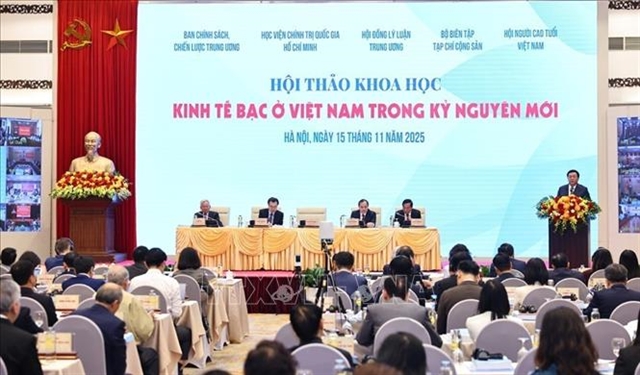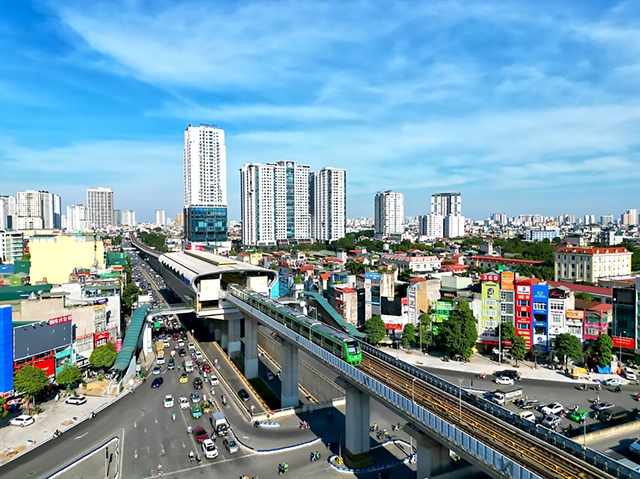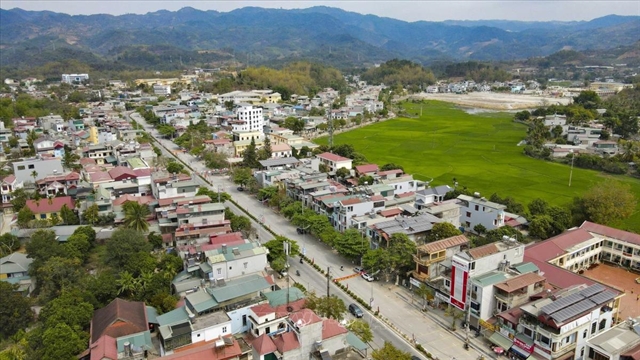 Society
Society

 |
| Cát Linh-Hà Đông metro line. VNA/VNS Photo |
HÀ NỘI — Hà Nội is poised for a transport revolution as the city plans 14 metro lines spanning more than 400km, a network capable of handling at least 45 per cent of urban travel demand, Deputy Director of the municipal Department of Finance Lê Trung Hiếu said. Achieving this threshold is crucial to alleviating road congestion and fundamentally transforming how residents navigate the capital.
Hiếu said the city stands at a historic turning point in urban development, with the metro identified as a strategic and inevitable pillar.
“These are not merely infrastructure projects, but a comprehensive restructuring that will shift Hà Nội from a road-based expanding city to a railway corridor-oriented city,” he said.
With a permanent population exceeding 8.5 million and nearly 8 million motor vehicles, the capital’s current transport infrastructure is already stretched beyond capacity. In-depth studies by the Japan International Cooperation Agency and the Transport Development and Strategy Institute show traffic congestion costs the city between US$1.2 and 1.5 billion annually, equivalent to 3–5 per cent of GRDP.
Hiếu warned of an imminent risk: without a fundamental breakthrough, Hà Nội may face mechanical congestion in the next decade, meaning infrastructure will no longer function effectively even with localised expansions. He stressed that in major cities worldwide, no mode of transport can match the metro in capacity, reliability and spatial efficiency.
“A single metro line can carry between 40,000 and 60,000 passengers per hour in each direction, dozens of times more than buses or private cars, thereby optimising urban space to the fullest,” he said.
He acknowledged the high costs of metro construction, averaging $150–200 million per km for underground sections and $80–120 million per km for elevated ones, including vehicles and equipment. But the long-term socioeconomic benefits are significant.
“Cities where 40–50 per cent of residents use public transport save billions of dollars annually through reduced congestion, lower fuel consumption, decreased pollution and higher labour productivity. International experience shows metro investment yields the highest social return among transport infrastructure types thanks to increased land value and enhanced economic connectivity,” Hiếu said.
Turning the 14-line plan into reality faces massive challenges, particularly in financing and project management. Heavy reliance on Official Development Assistance brings complex procedures, while technology integration, operation and land clearance also pose obstacles.
To maximise efficiency and financial self-sufficiency, metro development must be integrated with Transit-Oriented Development (TOD). Instead of uncontrolled suburban sprawl, Hà Nội will restructure along metro corridors, developing TOD zones of 10 hectares or more in urban areas and 20 hectares or more in suburban zones, depending on local conditions.
Hiếu said the city must soon issue legal frameworks and flexible land valuation mechanisms for TOD. Recouping part of the land value increment generated by metro projects, particularly around 10–15 key stations, could reinvest 20–30 per cent of initial investment costs back into the system.
He emphasised that metro investment is only one element of a broader strategy. Solutions for traffic organisation, vehicle management, connectivity infrastructure and digital operation systems must be implemented in parallel, alongside improvements to public transport services and multimodal connections around metro stations. VNS




